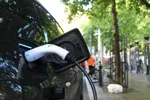This situation is expected to get worse according to EurotaxGlass’s.
The traditional volume manufacturers have suffered a fall in their share of the overall new car market over the last decade, slipping from 88% to 73%.
Ford is the biggest net loser, with many of the other traditional volume brands standing still during a period of climbing new car sales. The only real exceptions have been Honda, Toyota and Volkswagen, all of which have outperformed the overall market.
Meanwhile, the prestige brand manufacturers have more than doubled their share of new car sales over the same 10-year period, rising from 10 to 21%. The budget brands have also enjoyed success, moving from 3% to 6%, with much of this progress made during in the last three years.
EurotaxGlass’s believes their growth is all the more remarkable because they currently rely on private rather than corporate sales, and yet the UK’s private market fell by over 10% in 2005.
Over the next five years EurotaxGlass’s says prestige brands will occupy an even larger part of the small and lower-medium sectors currently dominated by the volume players, and budget carmakers will also be attacking this space but at a much lower price point. The first Chinese manufacturer (Landwind) will increase Europe’s budget car ranks in 2006, with other Chinese marques expected to follow.
“The volume-brand carmakers are making progress in cutting production and distribution costs,” said Adrian Rushmore, managing editor at EurotaxGlass’s.
#AM_ART_SPLIT# “However, they also need to invest much more in communicating distinctive and appealing brand values, and in particular make sure these are well understood by used car customers,” Rushmore adds.
“Most brand perceptions are formed from the experience gained from used car ownership and, if this is positive, there is every chance that owners will become new car purchasers for that brand in the future.”
The challenge for manufacturers is to entice more customers to take up the ownership experience for the first time. “But once again, that is dependent upon developing and communicating the core messages associated with the brand. Failure to do these things will result in poor residual values and poor new car sales. Many of the volume marques are failing on both counts,” says Rushmore.
The prestige brands have seen their greatest success in the upper-medium segment, increasing penetration from 12 to 38% since 1996. At the same time, this segment has actually reduced in size from 24 to 18% of total new car sales, representing a ‘double whammy’ for the mass-market players.
With company car schemes offering greater freedom of choice, there have been continuous year-on-year increases in the number of employees opting for a prestige model. This trend has been accelerated by the advantageous monthly rental calculation of prestige marque vehicles - a direct result of strong residual values.














Login to comment
Comments
No comments have been made yet.